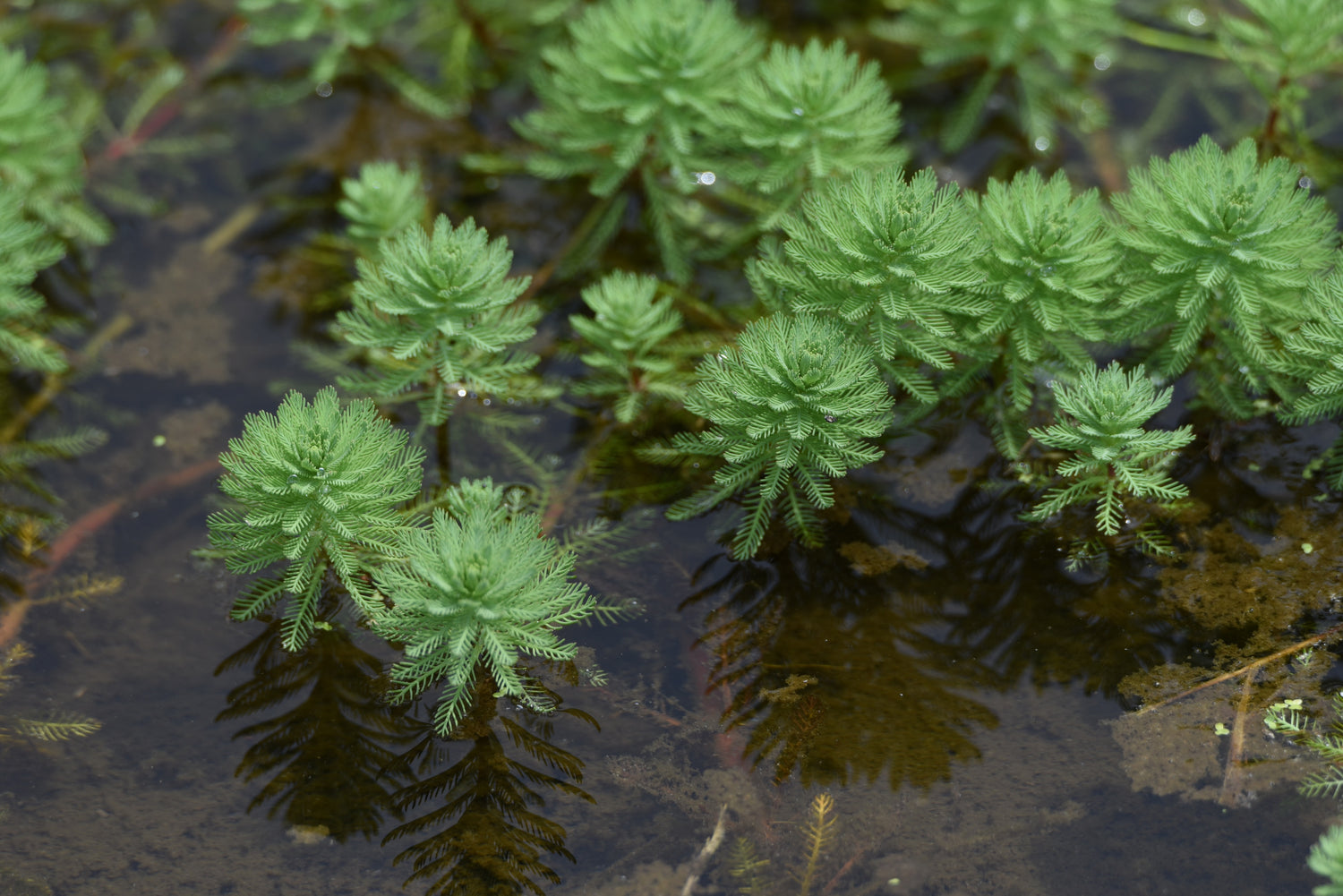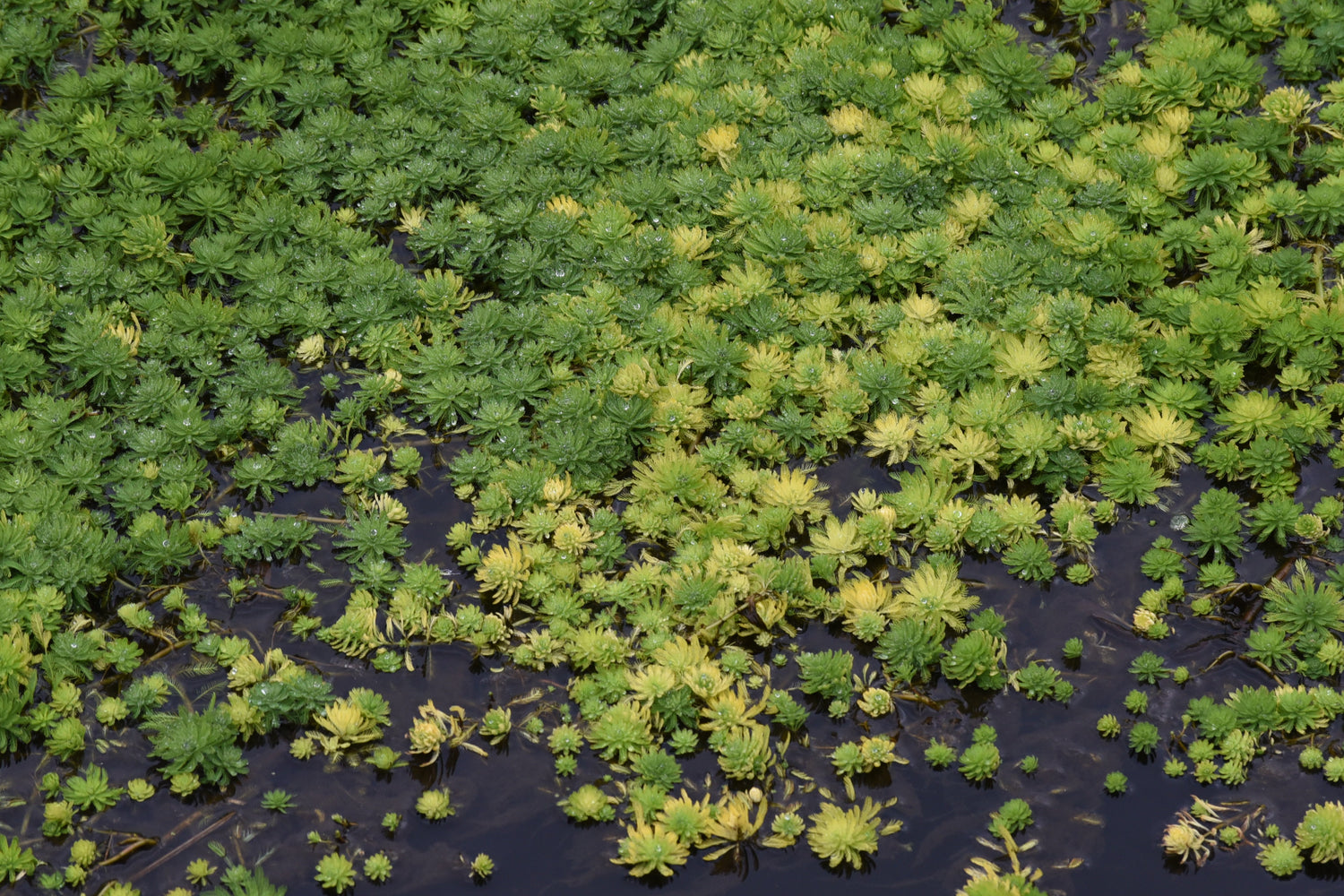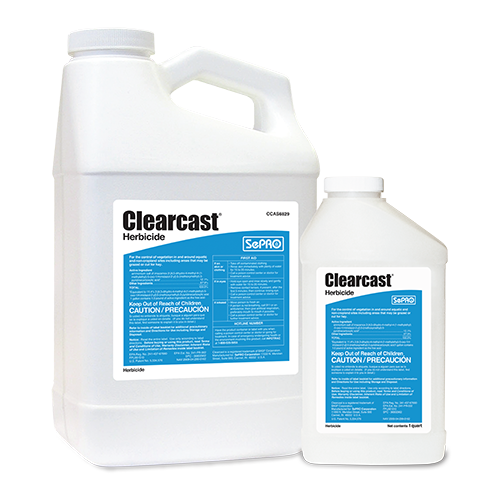Almost all plants of this species are female. Flowers of Parrotfeather are very small and white in color. Seeds are not produced in any North American plants. Parrotfeather reproduces asexually, with new plants growing from fragments of already rooted plants. Parrotfeather’s leaves are long and light green to blue green in color. There is no real predator to the parrotfeather, so it grows out of control. While part of the milfoil family, it is easily distinguishable from other milfoils as it grows both below and above the surface of the water.
Parrotfeather
Impact
-
1
Recreational activities such as swimming, fishing, and boating can be impaired and even prevented.
-
2
Dense mats of Aquatic weeds can block sunlight from native submerged plants.
-
3
Aquatic weeds greatly detract from the aesthetic appeal of a body of water.
-
4
Excessive growth can lead to fish stunting and overpopulation. This occurs because the production of too much habitat prevents effective feeding of small fish by larger fish.
-
5
Aquatic weeds can cause fish kills.
-
6
Aquatic weed growth provides quiet water areas ideal for mosquito breeding.
-
7
Weeds impede water flow in drainage ditches, irrigation canals, and culverts and cause water to back up.
Location
Parrotfeather can be found in most of the contiguous states.
Solutions
-
BEST SOLUTION
Sonar Infinity
Granular aquatic herbicide for long-term control of hydrilla, coontail, naiad & more. DIY-friendly, fish-safe, and season-long weed...Regular price $301.34Sale price $301.34 Regular priceUnit price per$0.00Regular price $301.34Sale price $301.34 Regular priceUnit price per$0.00 -
Clearcast®
The industry standard for cattail control. Systemic aquatic herbicide for cattails, alligator weed, and more. EPA-approved, fish-safe...Regular price From $129.14Sale price $129.14 Regular priceUnit price per$0.00Regular price From $129.14Sale price $129.14 Regular priceUnit price per$0.00 -
Renovate® 3 - 1 Quart
A specialized liquid formulation that attacks the leaves and stems of aquatic weeds. Liquid aquatic herbicide for...Regular price $69.69Sale price $69.69 Regular priceUnit price per$0.00Regular price $69.69Sale price $69.69 Regular priceUnit price per$0.00
Cart
Give Your Pond a Fresh Look
1 /3 /3 /3
Shipping policy
Disclaimer
Some states have special restrictions on the use of aquatic herbicides and algaecides. Therefore, Sonar, Renovate 3, Captain, AquaPro and Nautique cannot be sold through SePRO's direct consumer business in AK, CA, CT, ME, NJ, NY and WA. Revive, SePRO Blue and Natural Reflection can be sold in these states. Consult with appropriate state or local water authorities before applying these products. Some states may require an aquatic permit, notification prior to application, or have other conditions of use for aquatic products. VISA, MasterCard, Discover and American Express cards accepted. SePRO Corporation reserves the right, to be exercised at its sole discretion, to revise prices, limit quantities and correct pricing errors. Special offers and/or discounts are valid only at the time of order. Customer is responsible for collection fees, court costs and reasonable attorney fees to collect an unpaid account.
- Choosing a selection results in a full page refresh.
- Opens in a new window.





